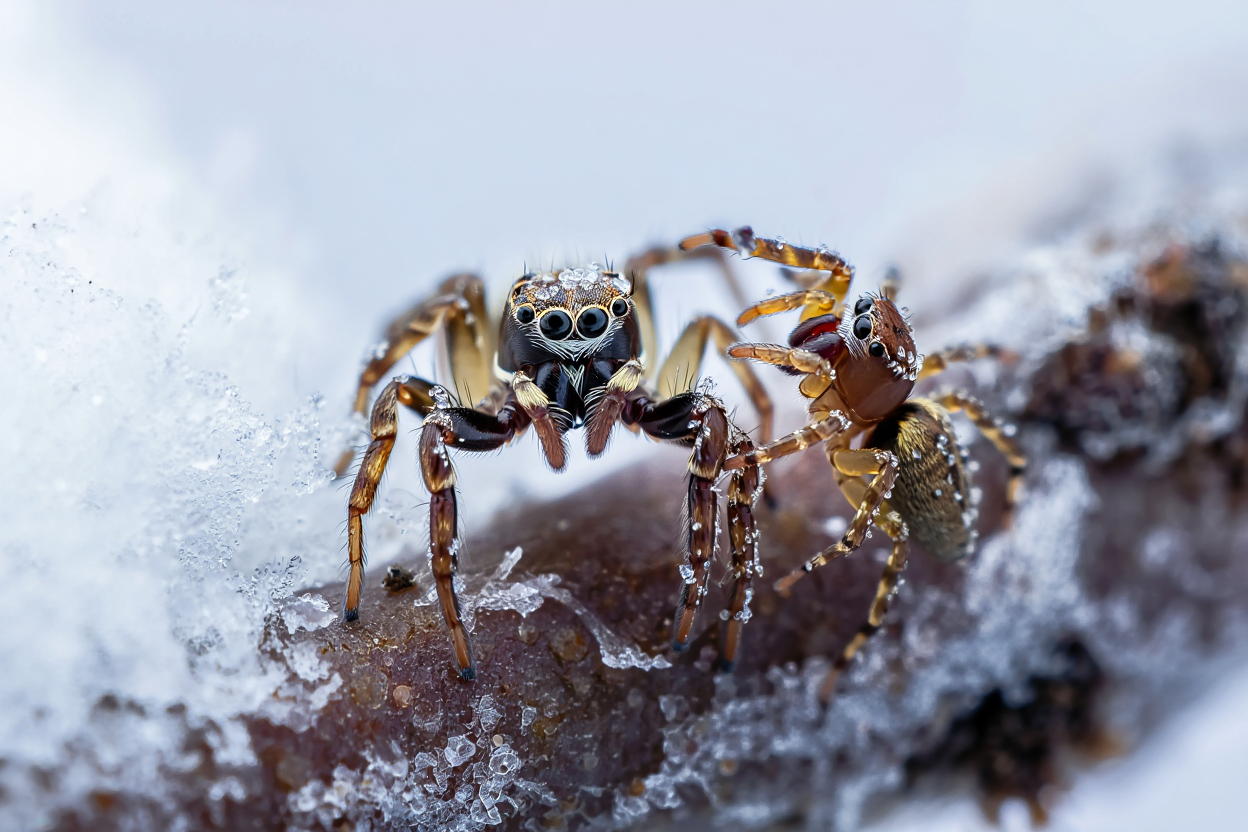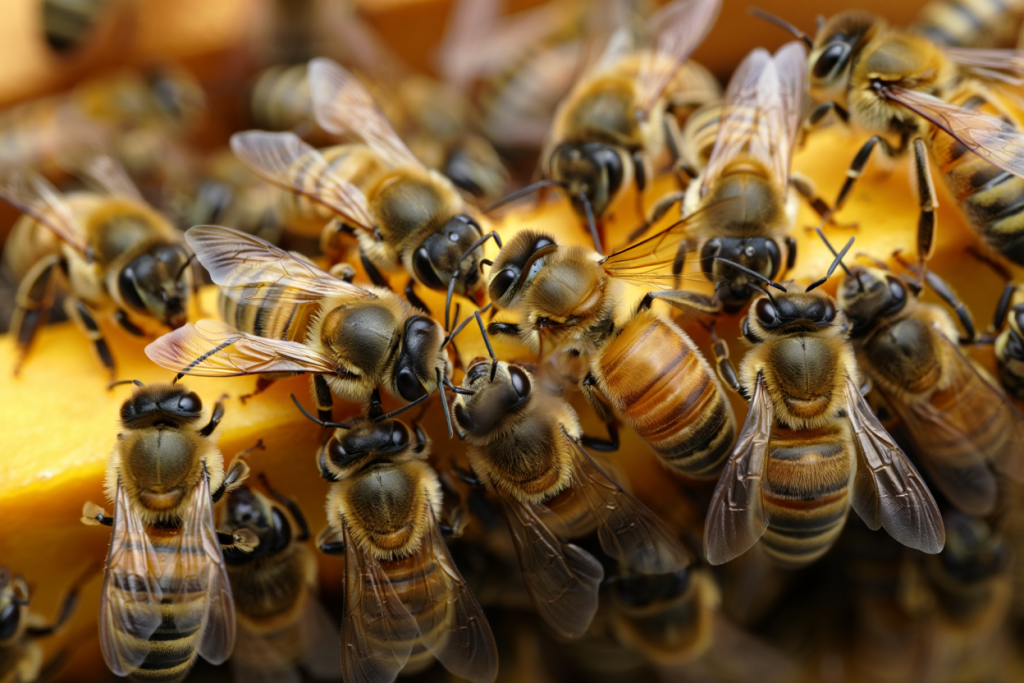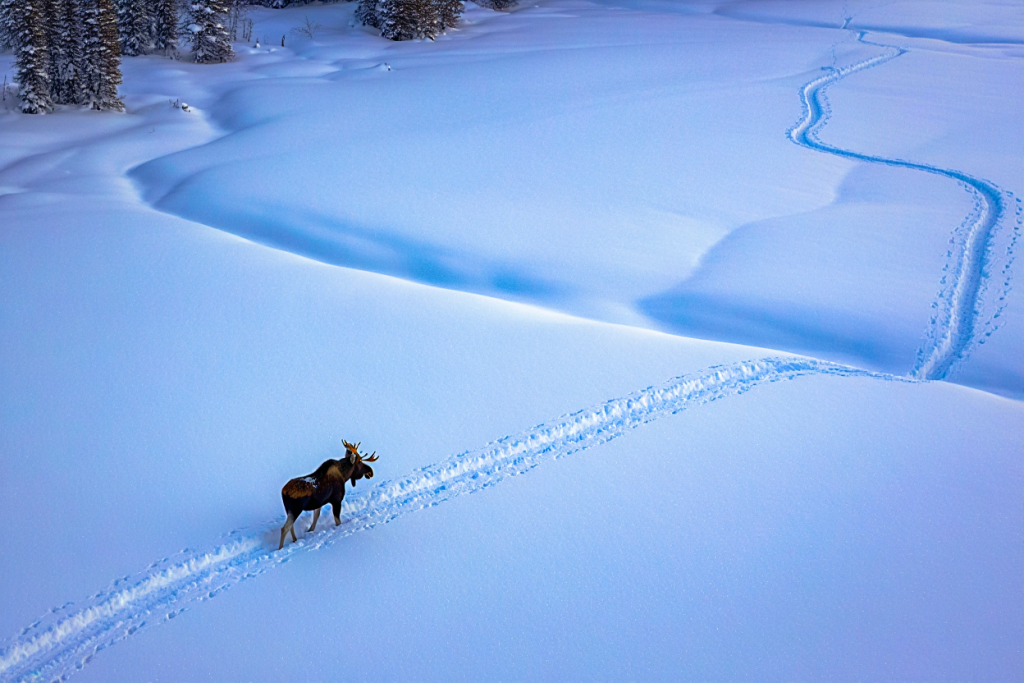Winter feels like more than just a season—it’s a survival test. With temperatures dropping, food becoming scarce, and staying alive translating to being creative, many animals go into full power-saving mode. Some others manage to build cozy fortresses for themselves, and some just pack up and head for warmer lands as seasoned snowbirds.
No matter their approach, one thing is for sure: when it comes to survival, nature doesn’t mess around.

Spriders—Nature’s Frost-Resistant Creepers
You may think winter may be the end of the road for the eight-legged creatures, but they’ve got some incredible survival hacks. Some ground-dwelling spiders, such as the wolf spider, that don’t just sit around and wait to freeze will have you surprised. These little creatures will go underground, burrow into soil, and hide under leaf piles, squeezing into cracks in tree bark and logs. Even if snow looks like an enemy for many other animals, for them it’s an insulator, keeping the space underneath warmer than the freezing air above.
There is an ultimate flex when it comes to spiders. They can produce their own biological antifreeze as soon as the autumn rolls in. They have a special fluid that can lower the freezing point of their bodily fluids, which means they can withstand temperatures able to turn most creatures into popsicles.
Essentially, they become mini ice warriors, waiting out the cold until spring gives them the green light to get back to creeping.
Turtles: The masters of slow survival
If we have to think about an animal that takes the chill to the extreme, here is the turtle. One thing about them is that they embrace the colds instead of fighting it. Eastern box turtles dig deep into the ground, and they curl up in burrows to ride out the season like the little reptilian hermits they are.
Painted turtles take it to a whole new level, sinking to the bottom of ponds and nestling into the mud where the water stays just above freezing.
The wild part is that they stop breathing with their lungs entirely, and instead, they absorb oxygen through their skin, mouths, and butts.
If the water gets too low in oxygen, there is no problem, as they switch to anaerobic respiration, a backup energy system that allows them to survive without oxygen. The catch is that it produces lactic acid, which should be deadly, but they neutralize it by drawing calcium from their own shells, and they literally use skeletons to stay alive. (If this is not hardcore, I don’t know what is.).

Honeybees: The Tiny, Furry Furnace Operators
While most insects take the easy route of dying off or going dormant in the cold, European honeybees work through the winter. They form a living, buzzing mass around their queen, and they lock in warmth like a tiny, vibrant furnace.
The interesting part is that they have layers. The inner bees take turns moving outwards, letting the colder ones cycle into the warm center. This is how they make sure nobody freezes. Moreover, their flight muscles can generate heat, which means their hive will be kept at a cozy temperature even with a frozen outside world.
This level of effort burns a lot of energy, and this is why honeybees spend all summer hoarding nectar, which they turn into honey. Their winter is not just about indulgence but their fuel for survival. Every drop of honey is converted into warmth, so if you feel bad about stealing honey from bees, remember that it’s literally their winter survival stash.
Chipmunks—the smartest snackers of winter
Bears might fatten up and sleep through the entire season, but you know who runs things differently? Chipmunks. These tiny hyperactive fluffballs might spend summer stashing food in their underground burrows (deep and well-structured tunnels including separate chambers for food storage, food, and even bathrooms, as hygiene matters even underground).
When winter sets in, chipmunks go into a state of torpor—a soft version of hibernation. Their heart rate drops from a racing 250 beats per minute to a barely-there 4 beats per minute. They slip into a deep sleep as their body temperature plummets.
The twist is that they don’t stay asleep the whole time. They wake up every few days to grab a snack from their hidden pantry, stretch, and maybe take a bathroom break. This is the ultimate life hack: to sleep through the worst of winter but keep your metabolism running enough to stay alive.
Migratory birds: The Smallest Long-Distance Travelers
Winter is a challenge for some birds, while for others it’s just a sign that it’s time to go. With more than 70% of backyard birds in North America not sticking around for the cold, all these beauties will pack up and head south, chasing warmth like seasoned retirees.
Take a ruby-throated hummingbird, for example. These creatures are no bigger than your thumb, and they make a 500-mile journey across the Gulf of Mexico in one go. (No stopping for snacks, no layovers). This is what they do every year, instinctively navigating through unpredictable weather conditions until they reach Central America.
Other birds, such as geese, for example, use the classic V formation to reduce wind resistance and take turns leading the pack—teamwork at its finest. Some songbirds, warblers, for example, take advantage of city lights to guide their way. This is the proof that survival is not only about instinct but also about adaptability.

Moose: The One-Animal Snowplows
Moose don’t hide when the snow piles up. They stomp through it like walking snowplows with their long legs that give them a height advantage. It allows them to wade through deep drifts and search for food.
Instead of wasting energy digging for grass, they change their diet. Moose spend the winter munching on bark, twigs, or whatever plants they can find poking through the snow. Their rumen, which means part of their stomach, acts like a fermentation tank, breaking down the food and pulling out every last nutrient. Even if they don’t have access to the tastiest menu, it keeps them going until spring.
Wood Frogs—the ultimate ice zombies
While some animals fight the cold, others embrace it. Another example of this motto is the wood frog. These little creatures let themselves freeze solid. You read it right, yep. As temperatures drop, their heart stops beating. They literally turn into frog-sicles, as ice crystals form in their bodies.
The insane part is that when spring arrives, the frog thaws out and comes back to life. Their cells are filled with glucose before freezing, preventing ice from damaging the tissues. Even if scientists don’t fully understand how they can survive being frozen alive. Sure thing, if zombies ever become real, wood frogs are already ahead of the game.
Owls—the silent winter hunters
They don’t migrate, and they don’t hibernate. Then what? Well, they just get better at hunting in the snow, and their feathers are specially designed to muffle sound , a thing that allows them to swoop down completely silently on unsuspecting mice and rabbits.
Similar to arctic fox behavior, some owl species can hear prey under the snow. They lock onto their target and dive down, punching straight through the icy layer with their talons. So, if winter were a battle, owls would be the stealth assassins.
This is where you can find the Winter World: The Ingenuity of Animal Survival Paperback, illustrated – a compilation of undiscovered mysteries by which nature sustains herself through winter’s harsh, cruel exigencies.
Read next: 7 Misunderstood Wild Animals You’re Terrified Of… But Shouldn’t Be












